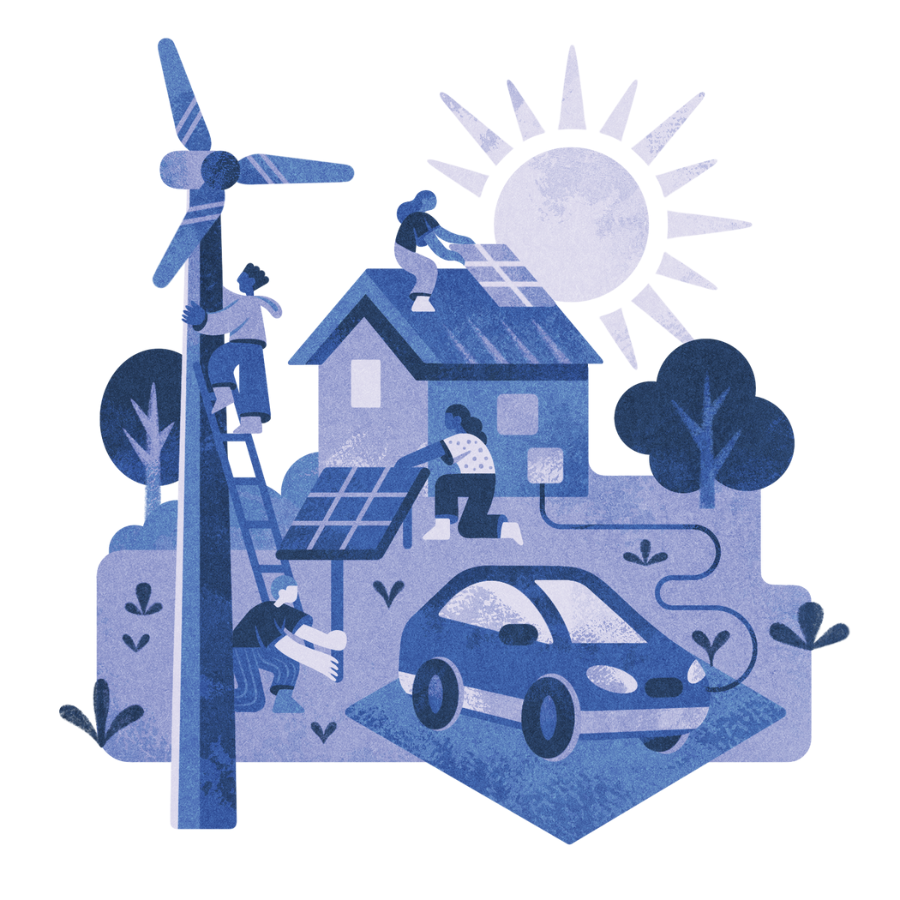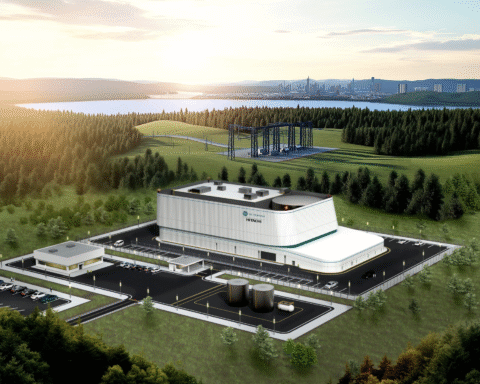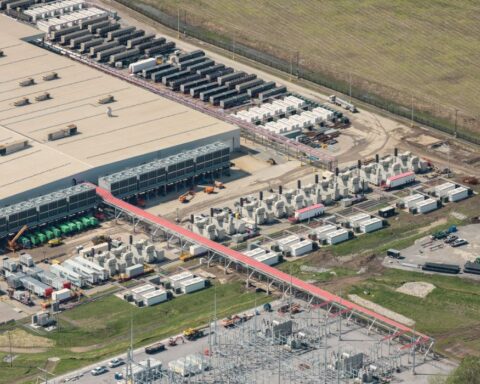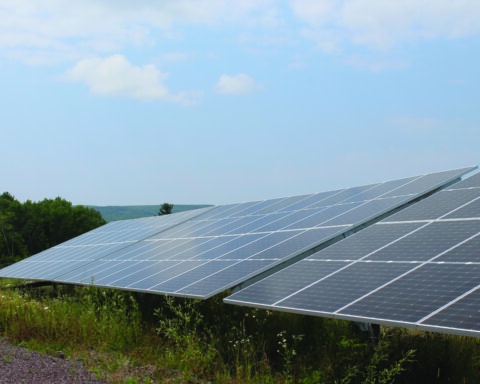Once entirely dependent on coal and natural gas, some 5,500 households in sunny southwestern Arizona have been slowly transitioning to renewable-energy sources and will soon be the beneficiaries of an additional 33 megawatts (MW) of solar power injected into the grid. The extra jolt in clean energy is due to a generous infusion of federal funding secured by the Trico Electric Cooperative.
Based in Marana outside Tucson, Trico received US$83.5 million in forgivable loans through Joe Biden’s Inflation Reduction Act to expand its number of solar array systems and battery storage capabilities. The co-op has been on a growth spurt and now serves approximately 48,000 members in and around the Tucson area, extending southward for almost 160 kilometres toward the Mexico border. In this part of the state, small towns dot the landscape, several of which depend on a single power line for their energy supply.
“Trico started from humble beginnings,” says Eric Hawkins, COO of the cooperative, which was founded by six ranching families in 1945 who pooled their meager resources to buy a generator and install transmission lines. “As a distribution co-op, we purchased whatever energy was available. But as we grew, we gradually started adding renewables.”
Over the past 12 years, the energy mix increased from 3% to 4% renewables to nearly 40% today. Upon project completion, that percentage will leap to 50%.
Trico intends to use the government financing to increase grid resilience and reliability for its members and has initiated plans to install 43 MW of battery storage capacity. This is especially important given the energy precarity of some of the areas that Trico services.
While the Trump administration’s determination to slash government funding, including to renewable-energy initiatives, has created widespread uncertainty across the United States, the corporate sector has been injecting serious money into clean energy co-ops that are delivering electricity to places where poverty levels are high and renewable energy scarce. Google, Intuit, Microsoft, Patagonia, Rivian and REI have all negotiated deals with rural energy co-ops that either supply clean power or support energy-efficiency measures. Microsoft is working with Clearloop, a Nashville, Tennessee, company bringing solar power to underserved communities. Google is supporting rural electric cooperatives in North and South Carolina with financing for energy-efficiency upgrades and other improvements. In return, corporations can purchase “environmental attribute certificates” – the equivalent of carbon credits – and count those toward their emission-reduction goals.
It is a far cry from the typical Canadian clean energy cooperative, which is almost exclusively urban, receives little government support and must adhere to a regulatory regime built for a centralized energy distribution system that buys energy from large producers. (Alberta is the exception. There the energy system is not centralized; instead, it operates on an open, competitive market.)
Read more from our collective economy series
Cooperative housing is making a comeback
Has the food co-op’s moment finally arrived?
The return of the collective economy
“Even Canada’s clean energy grants don’t recognize energy co-ops,” says Martin Boucher, research chair in sustainability at NorQuest College in Edmonton. “Those grants support specific programs or non-profits, but not a for-profit co-op.”
“You won’t find an energy co-op in rural areas,” he adds. “Here, co-ops are urban, and the investors tend to be middle class.”
Boucher and others believe that failing to recognize clean energy co-ops as another tool to help mitigate harmful emissions from fossil fuels while continuing to meet electricity demand – which is predicted to double or even triple by 2050 – is a missed opportunity.
One key benefit is that energy cooperatives can be deployed in places that are difficult to access, offering emission-free energy at affordable rates. Because generation and transmission is local, the power supply is highly resilient: when there is an outage on the main power grid, small-scale energy systems like the ones created by co-ops can keep working.
“Our biggest challenge,” observes Marion Siekierski, general manager of the Ottawa Renewable Energy Co-operative (OREC), “is that people don’t understand what a renewable-energy co-op can do. It’s just not a concept that’s present here.”
Green power in the rural U.S.
A cooperative is a corporation owned by members who use the corporation’s products or services. Community energy cooperatives typically generate or invest in renewable energy.
Cooperatives sell shares to people in the community to secure financing for the projects they wish to build or invest in. The revenue generated from selling that energy is used to pay back the investors and earn a return over time.
The economics of an energy co-op can be daunting in certain parts of the world. In Canada, co-ops must source financing from reluctant lenders who see collectives as a risky investment. In a 2021 census released by the Canadian Centre for the Study of Co-operatives, participants mentioned high transmission and distribution costs, and onerous grid-connection costs, as also being significant barriers.
But in the United States, several legislative tools have rejuvenated clean energy cooperatives; so far, those tools are still active. Hawkins says that some of the biggest energy co-ops, including Trico, are lobbying the White House to retain the programs and that he is feeling “generally optimistic” that funding will remain in place given rising demand.
You won’t find an energy co-op in rural areas [in Canada]. Here, co-ops are urban, and the investors tend to
be middle class.– Martin Boucher, research chair in sustainability, NorQuest College
The Powering Affordable Clean Energy (PACE) Program, created through the 2022 Inflation Reduction Act under the Biden administration, is a partially forgivable loan program for rural electric cooperatives, non-profits and other entities to install solar and battery storage projects in rural communities. Up to 60% of the loan is forgivable, depending on where the clean energy project is located. Awash with financing from PACE, other government programs and corporate interest, clean energy cooperatives have announced more than 5.3 gigawatts of renewable capacity additions through 2027. Some 900 rural electric co-ops provide power to more than 40 million homes and businesses.
On the other side of the Atlantic, 10,000 community energy associations operate in northwestern Europe, mostly in Germany, Denmark, Belgium, the Netherlands and Great Britain. The European Commission estimates that, by 2050, half of Europe’s population could be producing energy through rooftop solar on homes and other methods, with 37% of that energy coming from energy cooperatives.
Untapped superpower
In Canada, there were just 97 renewable-energy co-operatives in 2021, with roughly half of those active.
Simply put, the energy sector’s governing structures and regulatory regimes are not designed to accommodate the small scale and business model of a co-op.
Yet, renewable-energy cooperatives can offer community benefits in the form of stable, low-cost power, as well as contribute to the energy transition. In April of this year alone, OREC’s combined clean energy projects posted 109.8 tonnes of avoided greenhouse gases. Since 2013, OREC projects have avoided 7,383 tonnes of greenhouse gases, equivalent to the emissions generated by 79,635 road trips between Ottawa and Toronto. In the United States, 16 rural electric cooperatives that receive government funding will avoid more than 43 million tonnes of carbon emissions annually, equivalent to the emissions from 10 million gas-powered cars each year.
Canada’s new prime minister has pledged that the country will become an energy superpower under his watch in both conventional and renewable power. While cooperatives may not have the swagger of superpower status, the energy sector may have underestimated their potential. Indeed, clean energy collectives could make a significant contribution to meeting demand in communities that can least afford to invest in renewables while continuing down the path to a net-zero 2050.
Victoria Foote is a writer and editor who specializes in clean energy and climate.
The Weekly Roundup
Get all our stories in one place, every Wednesday at noon EST.






